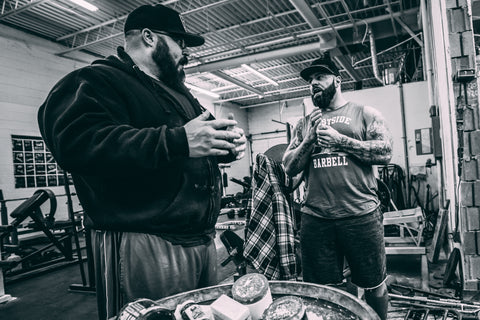Primary Accessory Exercises

What does it take to succeed using a Conjugate-based program? Do you need bands? Chains? Specialty bars? No. You need to have appropriately organized programming with the correct exercises selected and programmed at optimal levels of volume and intensity.
Unfortunately, when beginners think of the Conjugate Method, their mind immediately goes to bands, chains, specialty bars, and uncommon exercise variations. While we always have and always will use these tools in the training of our athletes, that is all they are - tools.
Just as the effectiveness of the hammer depends on the carpenter, the effectiveness of strength and conditioning tools depends on the exercise programming.
Previously, we discussed various ways of programming for max or dynamic effort main exercises. In this article, I will discuss the first exercise you’ll perform after your main movement; the primary accessory exercise.
What is a Primary Accessory Exercise?
A primary accessory exercise is performed as the first accessory movement immediately after your max, or dynamic effort main exercise has been completed. Primary accessory exercises allow us to continue training multi-joint movements at intensity levels of 75-90% after the main exercise of the day.
This means we can improve strength, increase muscle mass, or target specific weaknesses identified in the main exercises immediately in our accessory work.
How to Program Primary Accessory Exercises
When choosing primary accessory exercises, it is vital to understand your intent. Do you want to improve your overall strength? Do you need to increase the mass of a specific muscle group? Did you identify a weakness that needs to be addressed?
When selecting your primary accessory movements, you need to answer these questions.
Once you have those questions answered, you can begin to select exercises and decide how you will schedule the day-to-day and week-to-week training.
Here is how we would go about organizing primary accessory exercises for a few different individuals with specific training needs:
Athlete 1 - weak hamstrings, issues with tricep strength in the bench press
Athlete 2 - weak upper back, needs lower and upper body mass
Athlete 3 - weak shoulders, issues keeping chest up in the squat
Here are the correct primary exercise selections for each athlete over a training week:
Athlete 1 Primary Accessory Exercises
ME Lower - Giant Cambered Bar Good Mornings, work up to a top set of 5 reps
ME Upper - JM Press, work up to a top set of 8 reps
DE Lower - RDLs, 5 x 5
DE Upper - Close Grip Spoto Press, work up to a top set of 5 reps
Athlete 2 Primary Accessory Exercises
ME Lower - Rack Pulls vs. Monster Minibands, work up to a top set of 5 reps
ME Upper - Close Grip Bench Press, 5 x 5
DE Lower - Front Squat, 5 x 5
DE Upper - Push Press, work up to a top set of 8 reps
Athlete 3 Primary Accessory Exercises
ME Lower - Giant Cambered Bar Anderson Good Mornings, work up to a top set of 5 reps
ME Upper - Standing DB Overhead Press, work up to a top set of 8 reps
DE Lower - SSB Squat vs. Forward Pulling Minibands, 5 x 5
DE Upper - Strict Press, work up to a top set of 5 reps
The exercises selected above represent optimal primary accessory exercise selection and programming intended to address the issues and weaknesses identified in each athlete.
Fight Fire with Fire
Today, when a weakness or issue with an exercise is identified, many believe it is sound practice to begin to severely regulate intensity inputs and focus on low-impact exercises meant to correct “movement issues.” This leaves an athlete further unprepared and on course to remain weak or get injured.
When you discover a weakness or an issue with a lift, it should be taken as a threat to your success. When under threat, do you address the threat or flee? You most certainly address the danger with every option you have at your disposal. Strength training is no different.
If you have a hamstring weakness affecting your squat, choose a primary accessory exercise that is a multi-joint movement and hamstring-focused. The same goes for any other muscle group or movement issue. The only way to solve these issues is through targeted exercise selection and optimal volume and intensity inputs.
Instead of choosing the broomstick, select the proper primary accessory exercise, the ideal barbell, and the right volume and intensity level. You'll find yourself bigger, stronger, and more resilient.
Sources:
Simmons, L. (2007). Westside Barbell Book of Methods. Westside Barbell.
Verkhoshansky, Y., & Siff, M. C. (2009). Supertraining. Verkhoshansky.





